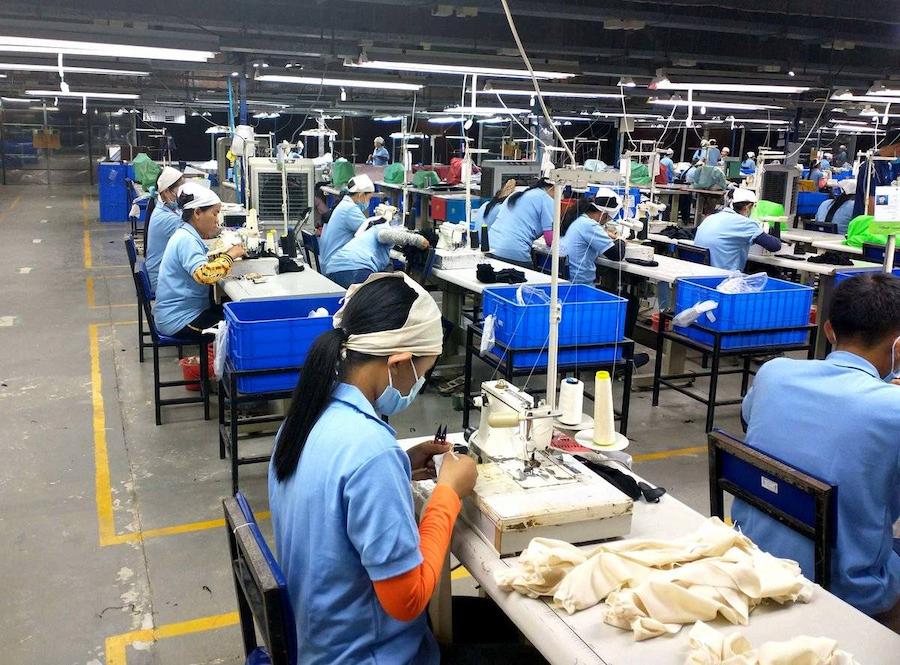Cambodia’s Manufacturing Sector Predicted To See Significant Growth In 2024
Cambodia's manufacturing sector, which is lumped together in the industrial sector by the government, is predicted to experience an 8.5 per cent growth in 2024, bolstered by the country's continued recovery in garment and non-garment manufacturing.

According to the Ministry of Economy and Finance (MEF) budget brief report for the fiscal year 2024, manufacturing growth is outpacing other key sectors such as services and agriculture, which have expected growth rates of 6.9 and 1.1 per cent respectively.
"The industrial sector is projected to continue growing at around 8.5 per cent in 2024, up from about 5.0 per cent in 2023, due to an expected recovery in the garment sub-sector, while the non-garment manufacturing sub-sector continues to maintain strong growth,” the report said.
In addition, the (MEF) budget brief report also stated that Cambodia's economy is on track to recover and is forecasted to grow by 6.6 per cent in 2024. This aligns with expectations in their draft ‘Law on Financial Management 2024’, which was released in October 2023.
Cambodia's gross domestic product (GDP) is expected to reach approximately USD $35.17 billion in 2024, while GDP per capita is expected to rise to USD $2,071 – up from USD $1,917 in 2023. The exchange rate is also predicted to remain stable at approximately 4,065 riel per US dollar, with an inflation rate of 2.5 per cent in 2024.
Key Sub-Sectors Contributing To Growth In Cambodia
According to the Cambodian Ministry of Economy and Finance, the expected recovery in the garment sub-sector is the result of an increase in demand from Cambodia's trading partners, including the United States and the European Union.
However, the latest trade data on garment exports suggest that Cambodia exported textiles, garments, footwear and travel products worth USD $9.9 billion in the first 11 months of 2023 which was a downturn of 15 per cent compared to 2022. So, risks remain due to ‘high uncertainty’ in the global economic situation, which may lead to a continued slump in external demand, especially with the geopolitical conflicts and potential rising costs of shipping and logistics already seen at the start of January 2024.
The government did launch the ‘Cambodia Garment, Footwear, and Bag Development Strategy 2022-2027’ which it hopes will boost the investment climate and promote further competition in the sub-sector.
The Cambodian budget brief 2024 report states that non-garment manufacturing sectors are also expected to maintain a “good standing”, partly driven by the maintenance of a production balance that caters to domestic demand and is supported by the expectation of better production growth for exports.
“Positive trends in external demand and free trade agreements will continue to drive the growth of this sub-sector in manufacturing and exporting, especially for key products such as solar panels, tires, and fur skins,” the report noted. Cambodia has been a leading manufacturer and exporter of bicycles, and there have been ongoing investments to upskill and diversify the workforce to embrace new technologies.
Automobile manufacturing plants have seen increased investments, and this diversified sub-sector of non-garment products are mostly produced in the special economic zones intended for export to the EU, US, Japan, Korea, and Thailand. The report added that the 2021 Investment Law and the subsequent sub-decrees are expected to help make Cambodia's investment environment more attractive and favourable to international investors.
Reflecting On Cambodia’s Garment and Manufacturing Sector In 2023
In 2023, the Council for the Development of Cambodia (CDC) approved 268 investment and investment expansion projects with a combined investment capital of USD $4.9 billion. Ninety-two per cent of these projects were focused on the industrial sector, while the remaining investments were allocated to agriculture and agro-industry, the tourism sector, and infrastructure development. China accounted for the largest share of investment, contributing two-thirds of total investment capital, while domestic investment ranked second, comprising 24 per cent of the total.
However, according to a report by the ASEAN+3 Macroeconomic Research Office (AMRO), Cambodia's manufacturing sector, particularly the garment sector, faced challenges in 2023 due to external risks, which strongly influenced the country’s growth prospects, particularly the weakening of global economic recovery and an increase in global commodity prices.
There should remain benefits from bilateral Free Trade Agreements (FTAs) such as the China (CCFTA), South Korea (CKFTA) and the Regional Comprehensive Economic Partnership (RCEP), while Cambodia has preferential tariffs on exports to major countries including the US, EU and UK.
The garment, textile, footwear and travel goods industry is the largest foreign exchange earner in Cambodia, with approximately 1,200 factories and branches and representing a workforce of around 840,000 workers.
Ministry of Commerce’s Secretary of State and Spokesman Penn Sovicheat confirmed that the “Global economic slowdown, particularly in the European Union, has led to a decline in our exports of garment, textile, footwear and travel products.” The key importers from Cambodia’s manufacturing sector are the European Union, the United States, Canada, and the United Kingdom. As of January 1st, 2024, the minimum wage in Cambodia has also increased to USD $204.
Read More On Cambodia’s Economy: